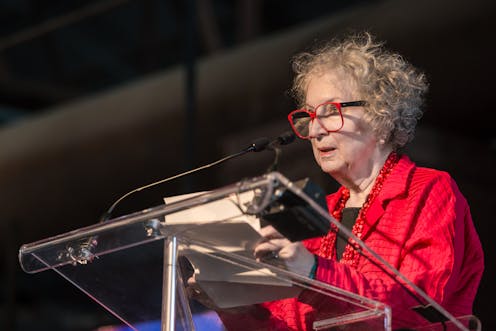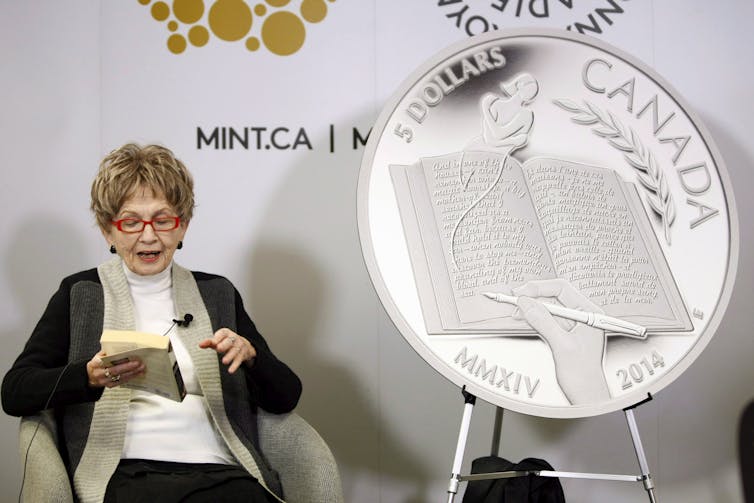
This year, Nobel Prizes continued to celebrate women’s achievements: the Nobel Prize in chemistry was awarded jointly to Emmanuelle Charpentier and Jennifer Doudna for developing a tool for genomic editing called CRISPR-Cas9.
This builds on the 2018 chemistry prize which went to Frances Arnold for her application of genetic engineering to create new proteins to benefit humanity. And in physics, Andrea Ghez received the award for the discovery of a black hole in the centre of the Milky Way. Canada’s own Donna Strickland received the Nobel in 2018.
With the Nobel in literature going to Canada’s Alice Munro in 2013 and this year’s award to American Louise Gluck, Canadians eagerly await even further recognition for Margaret Atwood, a double winner of the Booker prize.

Several women in Canada have made Nobel-worthy discoveries in the area of life sciences. None may be more deserving than McGill University’s Brenda Milner for her discoveries on long-term memory.
It is not only women in Canada whose contributions should be recognized with more Nobel Prizes, there is a strong case for men as well.
Read more: A memory pill? Cognitive neuroscience's contributions to the study of memory
Canadian pride
This year’s Nobel Prize in physiology or medicine went to the University of Alberta’s Michael Houghton for his discovery of hepatitis C. In 2015, the Nobel Prize in physics went to Arthur McDonald at Queen’s University, for his discovery that neutrinos have mass.
Read more: How an Alberta researcher’s discovery of hepatitis C led to the Nobel Prize and saved lives
Canada aspires to even further recognition for the discovery of bacterial adaptive immunity by Sylvain Moineau at Laval University that was the foundation for this year’s Nobel Prize in chemistry.
Together with Rodolphe Barrangou at North Carolina State University and Philippe Horvath at Dupont Nutrition and Health in France, they demonstrated that CRISPR-Cas9 is the adaptive immune system of bacteria.
Adaptive immunity has been long understood in vertebrates as the acquisition of memory of past infections from a pathogen. Any subsequent infection leads to destruction of the pathogen.
Read more: Why can't Canada win another Nobel Prize in medicine?
Barrangou, Horvath and Moineau’s interest was in yogurt, and specifically why bacteria used to make yogurt died from viral infections. Moineau is an expert on bacterial viruses known as bacteriophages. Barrangou and Horvath are food scientists. Together, they discovered that bacteria could resist viral infections by an adaptive immune system that had a memory of past bacteriophage infections and a mechanism to destroy any subsequent infections. These discoveries extended the concept of adaptive immunity from vertebrates to bacteria.
They discovered the memory of past viral infections in bacteria is CRISPR. They also discovered that any subsequent infection would be destroyed by the bacterial enzyme Cas9. It is these discoveries that enabled Charpentier and Douda to create the tool kit of CRISPR-Cas9 to edit genes in any organism.
By 2010, more than 10 Nobel Prizes in physiology or medicine had been given for discoveries of immune systems with three more in 2011. Recognizing Barrangou, Horvath and Moineau with a Nobel Prize for their demonstration of adaptive immunity in bacteria is more than a hope.
John Bergeron gratefully acknowledges Kathleen Dickson as co-author.
John Bergeron does not work for, consult, own shares in or receive funding from any company or organization that would benefit from this article, and has disclosed no relevant affiliations beyond their academic appointment.
* This article was originally published at The Conversation
HELP STOP THE SPREAD OF FAKE NEWS!
SHARE our articles and like our Facebook page and follow us on Twitter!





0 Comments